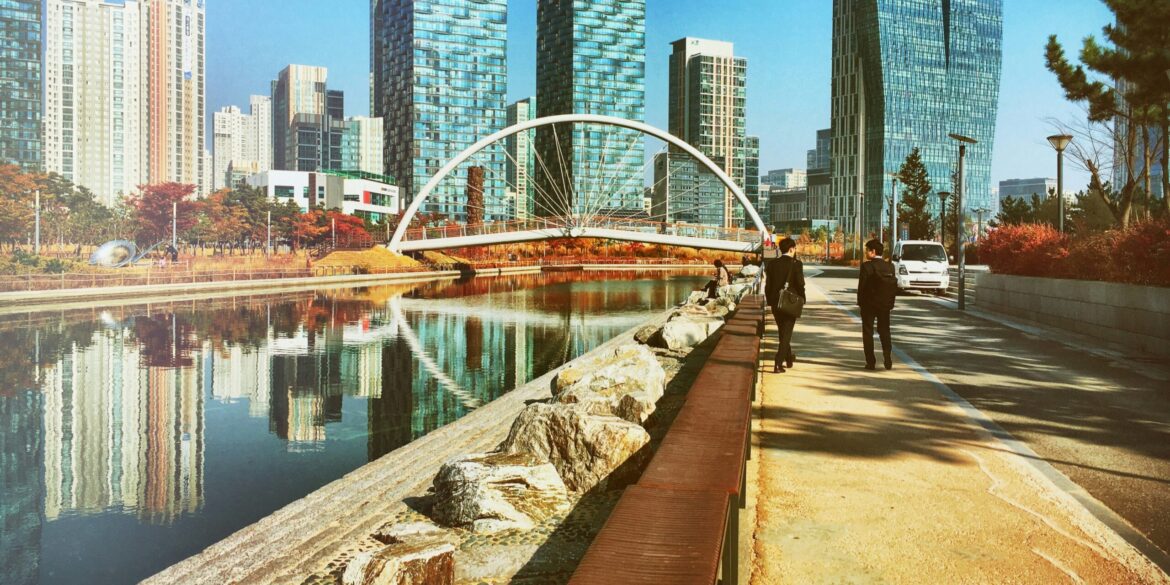The long-speculated transformation of the James R. Thompson Center officially began today, marking the commencement of a substantial $500 million redevelopment led by a consortium anchored by Google Properties. The ceremony, attended by city officials and project leaders, heralded a new chapter in downtown Chicago’s evolution—one poised to blend architectural preservation, innovation, and public utility.
Designed by famed German-American architect Helmut Jahn and opened in 1985 as the State of Illinois Center, the 17-story Thompson Center has long been emblematic of postmodern daring and operational challenges. Over the decades, it became notorious for its single-pane glass curtain wall and inefficient heating and cooling systems, costing taxpayers up to $17 million annually for maintenance and drawing ridicule even as it became a candidate for historic preservation.
In 2022, the State of Illinois agreed to a deal in which Alphabet Inc. would acquire the building for roughly $105 million after renovations, transferring state offices to a nearby location. This groundbreaking phase formalizes those plans, spotlighting a meticulous approach to preserving Jahn’s iconic atrium and exterior form while updating the building’s performance and community footprint.
The redevelopment, now managed under JRTC Holdings—a venture comprising The Prime Group and Capri Investment Group—includes extensive enhancements to the original design. The project will preserve the massive 17-story atrium while replacing the original multicolored single-pane facade with modern triple-pane glass. This upgrade aims to showcase the atrium from the street, maximize daylight, and drastically improve energy efficiency. Sustainable features, including all-electric systems and a goal of achieving LEED-Platinum certification, are also integral to the project.
Read Also: https://toplistings.com/homefront-real-estate-faces-rising-costs-amid-tariff-uncertainty/
Google will lease the third through ninth floors of the building, anchoring a modern campus designed to attract tech startups and foster collaborative innovation. The layout includes coworking suites, co-creation zones, and flexible leasing arrangements tailored to the needs of the contemporary workforce. This tenant-forward approach positions the Thompson Center as both a corporate hub and a community space.
The redesign also focuses on the surrounding public realm. Pedestrian access along Randolph, State, Dearborn, and LaSalle Streets will be expanded, and the street-level facade will house new retail establishments. A central public plaza and landscaped terraces at multiple levels will provide inviting communal areas. The famous “Monument with Standing Beast” by Jean Dubuffet, which was relocated in 2024, is expected to be reintegrated or commemorated in the updated site plan.
Beyond aesthetics, the redevelopment emphasizes sustainability. Triple-pane curtain walls, high-efficiency HVAC systems, and increased natural lighting will help the building meet contemporary environmental performance standards. Google’s ambition to make the site LEED-Platinum certified reflects a broader commitment to carbon-conscious development.
This redevelopment is unfolding at a crucial time for Chicago’s central business district. As the Loop grapples with rising vacancy rates and post-pandemic recovery, the Thompson Center’s transformation offers a beacon of economic and cultural renewal. Experts believe that Google’s presence will stabilize the area’s commercial real estate and encourage further investment in retail, housing, and entertainment nearby.
Governor J.B. Pritzker praised the project during the ceremony, thanking Google for preserving the building’s architectural legacy while adapting it for modern use. Mayor Brandon Johnson expressed confidence that the redevelopment would generate jobs, activate public space, and reaffirm the Loop’s role as a civic and commercial nucleus.
Work on the Thompson Center has been underway since early 2024, with fencing, demolition, and interior preparation progressing steadily. Installation of the triple-pane glass panels and renovation of the atrium are ongoing. The first wave of tenants, including Google employees, is expected to move in by late 2027.
Renderings released over the past year have offered a glimpse into the future of the building, showcasing seating terraces, lounge areas, and food and retail pop-ups within the restored, light-filled atrium. Public programming and tenant details are expected to be announced as construction progresses.
The Thompson Center’s redevelopment serves as a compelling case study in how iconic yet outdated buildings can be transformed into dynamic assets for modern cities. It underscores the possibility of combining historic preservation with technological innovation, environmental responsibility, and civic inclusivity. For downtown Chicago, the stakes are high—but so is the promise of revitalization.

